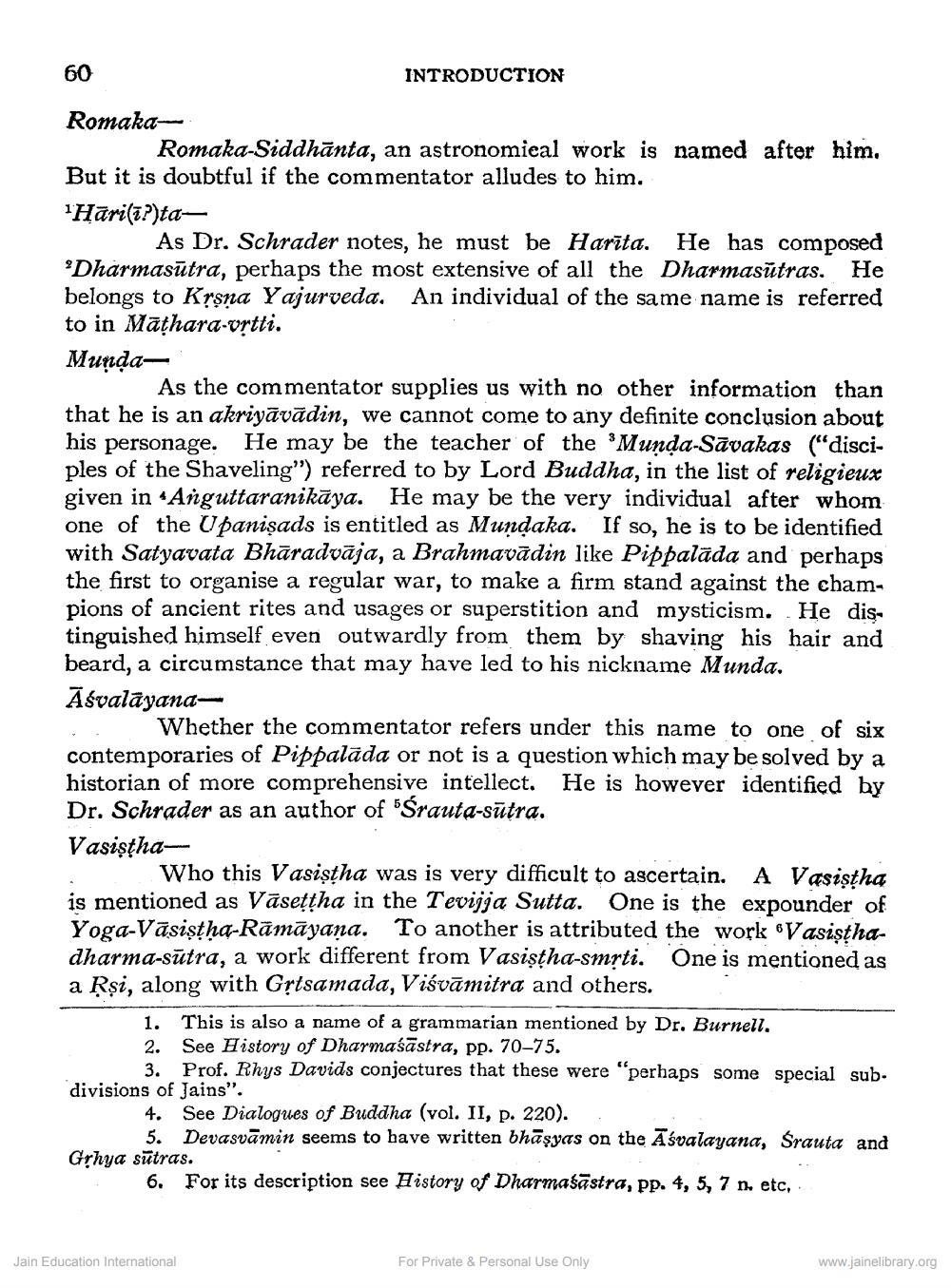________________
60
Romaka
Romaka-Siddhanta, an astronomical work is named after him. But it is doubtful if the commentator alludes to him.
1Hāri(i?)ta
INTRODUCTION
As Dr. Schrader notes, he must be Harita. He has composed 'Dharmasutra, perhaps the most extensive of all the Dharmasutras. He belongs to Krsna Yajurveda. An individual of the same name is referred to in Mathara-vṛtti.
Munda
As the commentator supplies us with no other information than that he is an akriyāvādin, we cannot come to any definite conclusion about his personage. He may be the teacher of the Munda-Savakas ("disciples of the Shaveling") referred to by Lord Buddha, in the list of religieux given in Anguttaranikaya. He may be the very individual after whom one of the Upanisads is entitled as Mundaka. If so, he is to be identified with Satyavata Bharadvaja, a Brahmavadin like Pippalada and perhaps the first to organise a regular war, to make a firm stand against the champions of ancient rites and usages or superstition and mysticism. He distinguished himself even outwardly from them by shaving his hair and beard, a circumstance that may have led to his nickname Munda.
Āśvalayana
Whether the commentator refers under this name to one of six contemporaries of Pippalada or not is a question which may be solved by a historian of more comprehensive intellect. He is however identified by Dr. Schrader as an author of "Śrauta-sutra.
Vasistha
Who this Vasistha was is very difficult to ascertain. A Vasistha is mentioned as Vaseṭṭha in the Tevijja Sutta. One is the expounder of Yoga-Vasistha-Rāmāyaṇa. To another is attributed the work Vasisthadharma-sutra, a work different from Vasistha-smrti. One is mentioned as a Rşi, along with Grtsamada, Visvamitra and others.
1. This is also a name of a grammarian mentioned by Dr. Burnell.
2. See History of Dharmaśāstra, pp. 70-75.
3. Prof. Rhys Davids conjectures that these were "perhaps some special subdivisions of Jains".
4. See Dialogues of Buddha (vol. II, p. 220).
5. Devasvamin seems to have written bhāṣyas on the Asvalayana, Śrauta and
Grhya sutras.
6. For its description see History of Dharmasastra, pp. 4, 5, 7 n. etc,
Jain Education International
For Private & Personal Use Only
www.jainelibrary.org




